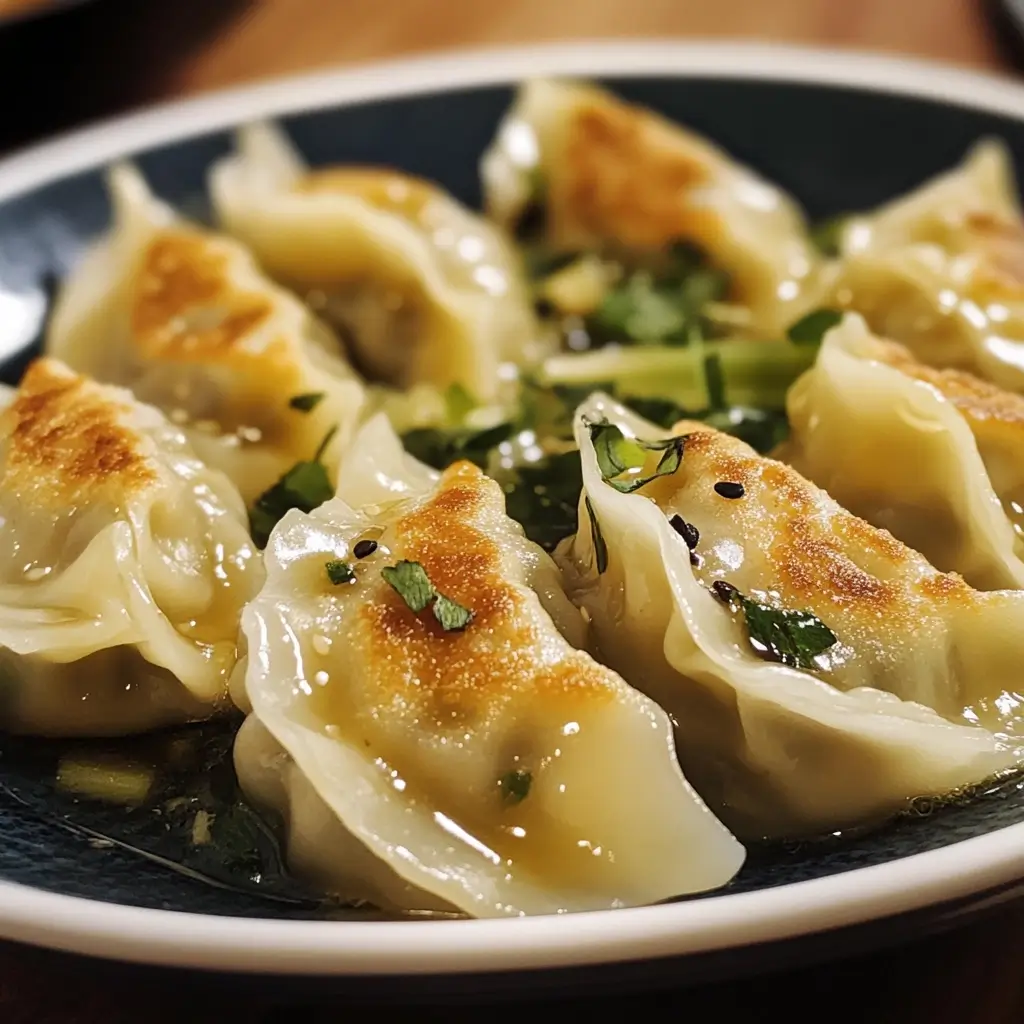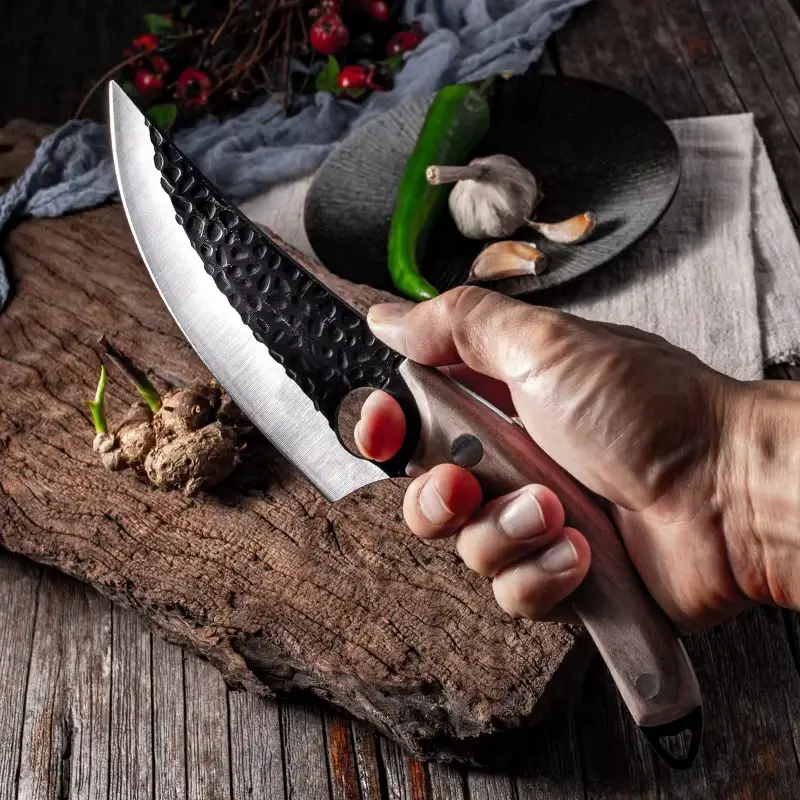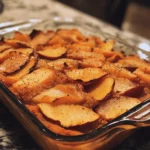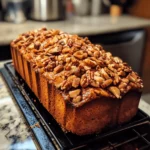Of all the culinary discoveries I’ve made over the years, few have brought as much consistent joy and relief to my hectic weekly routine as this recipe for Steamed Veggie Dumplings. I remember the first time I made them. It was a Tuesday night, the kind where energy is low but the desire for something truly satisfying—not just another quick pasta dish—is high. I was skeptical of the “in minutes” claim, having dabbled in more complex dumpling recipes that consumed entire afternoons. But as the lid came off the steamer, releasing a fragrant cloud of ginger, garlic, and sesame, and revealing those perfectly plump, translucent parcels, I was converted. My family, initially wary of the “veggie” label, devoured them. My youngest, a notoriously picky eater, asked for a second helping before the first was even finished. Now, these dumplings are our go-to. They are our celebration meal for small victories, our comfort food on rainy days, and our secret weapon for a “wow-factor” dinner that is, quite honestly, easier to make than most of our regular weeknight staples. They are a testament to the fact that wholesome, incredibly delicious food doesn’t have to be a monumental effort. This recipe is more than just a set of instructions; it’s a gateway to creating beautiful food memories, one perfectly steamed dumpling at a time.
Ingredients
- Round Dumpling Wrappers (1 package, approx. 40-50 wrappers): These are the thin, pre-made dough circles that form the delicate skin of your dumplings. Look for them in the refrigerated section of Asian markets or larger supermarkets, often near the tofu.
- Napa Cabbage (2 cups, finely minced): This provides a subtle sweetness and a tender-crisp texture that is essential to the filling. Its high water content means it must be properly prepped to avoid a soggy filling.
- Shiitake Mushrooms (1 cup, finely minced): Fresh or rehydrated dried shiitakes bring a deep, savory, and umami-rich flavor to the filling, giving it a wonderfully “meaty” quality without any meat.
- Carrots (1 cup, finely grated): Adds a beautiful pop of color, a touch of sweetness, and a pleasant textural contrast to the softer ingredients.
- Firm Tofu (8 ounces, crumbled): Once pressed and crumbled, firm tofu acts as a fantastic binder and adds a substantial source of plant-based protein, making the dumplings incredibly satisfying.
- Scallions (½ cup, finely chopped): Also known as green onions, these provide a mild, fresh, oniony bite that brightens the entire flavor profile.
- Fresh Ginger (1 tablespoon, grated): A non-negotiable ingredient, fresh ginger imparts a warm, zesty, and aromatic spice that cuts through the richness of the other components.
- Garlic (3 cloves, minced): Provides the foundational savory, pungent aroma and flavor that is characteristic of so many beloved Asian dishes.
- Low-Sodium Soy Sauce (3 tablespoons): This is the primary seasoning, lending a salty, savory, and umami depth to the filling. Using low-sodium allows you to control the salt level more effectively.
- Toasted Sesame Oil (2 teaspoons): A finishing oil with a powerful, nutty, and fragrant aroma. A little goes a long way in adding a signature, authentic taste.
- Rice Vinegar (1 teaspoon): A touch of acidity is crucial for balance. Rice vinegar adds a mild, slightly sweet tang that lifts all the other flavors.
- White Pepper (½ teaspoon): Offers a different kind of heat than black pepper—more earthy and sharp—which complements the other Asian spices beautifully.
- Olive Oil or Neutral Oil (1 tablespoon): Used for sautéing the aromatics and vegetables, helping to meld their flavors together before they become the filling.
Instructions
- Prepare the Tofu and Cabbage: This is the most crucial step for a perfect, non-soggy filling. Place the crumbled tofu on a plate lined with paper towels. Place more paper towels on top and press down firmly with your hands or a heavy object (like a cast-iron pan) to squeeze out as much excess water as possible. Set aside. In a separate bowl, toss the finely minced napa cabbage with a ½ teaspoon of salt. Let it sit for 10-15 minutes. The salt will draw out the water. Then, place the cabbage in a clean kitchen towel or cheesecloth and wring it out with all your might. You’ll be amazed at how much liquid is released. This step ensures a juicy, not watery, dumpling.
- Sauté the Aromatics and Vegetables: Heat 1 tablespoon of olive oil in a large skillet or wok over medium-high heat. Add the minced garlic and grated ginger and sauté for about 30-45 seconds until fragrant, being careful not to burn them. Add the grated carrots and minced shiitake mushrooms to the skillet. Cook, stirring frequently, for about 4-5 minutes, or until the mushrooms have released their liquid and the vegetables are tender. This process of cooking down the vegetables deepens their flavor and further reduces moisture content.
- Combine the Filling: Transfer the cooked vegetable mixture from the skillet to a large mixing bowl. Add the pressed, crumbled tofu, the squeezed napa cabbage, and the finely chopped scallions. Stir everything together until well combined.
- Season the Filling: To the vegetable and tofu mixture, add the soy sauce, toasted sesame oil, rice vinegar, and white pepper. Mix thoroughly until every component is evenly coated in the seasonings. At this point, you can cook a tiny spoonful of the filling in the skillet to taste and adjust seasonings if necessary. Let the filling cool for at least 10 minutes before you begin wrapping; a hot filling can make the wrappers gummy and difficult to work with.
- Set Up Your Dumpling Wrapping Station: This is where the magic happens! Create an assembly line for efficiency. You’ll need your bowl of cooled filling, your stack of dumpling wrappers (keep them covered with a slightly damp cloth to prevent them from drying out), a small bowl of water, and a parchment-lined baking sheet or large plate to place the finished dumplings on.
- Fold the Dumplings: Take one wrapper and place it in the palm of your non-dominant hand. Spoon about 1 to 1.5 teaspoons of filling into the center. Be careful not to overfill, as this is the primary cause of bursting during steaming. Dip your finger in the small bowl of water and trace it along the entire outer edge of the wrapper. This water acts as a glue. Fold the wrapper in half to create a half-moon shape. Pinch the very top center together firmly. Now, working from the center outwards on one side, create 2-3 small pleats, pressing each pleat against the flat back layer of the wrapper to seal. Repeat on the other side. The goal is to create a tightly sealed, crescent-shaped dumpling that can sit upright. Place the finished dumpling on your parchment-lined tray and repeat with the remaining wrappers and filling.
- Steam the Dumplings: Prepare your steamer. If using a bamboo steamer, line each tier with parchment paper liners or large cabbage leaves to prevent sticking. If using a metal steamer insert, a light spray of oil or a parchment liner works well. Arrange the dumplings in a single layer in the steamer basket, ensuring they are not touching each other, as they will expand while cooking. Leave about a ½-inch of space between them. Fill a large pot or wok with about 1-2 inches of water and bring it to a rolling boil. Carefully place the steamer basket over the boiling water, cover with a lid, and steam for 8-10 minutes. The dumplings are done when the wrappers are slightly translucent and the filling is hot.
- Serve Immediately: Carefully remove the steamer from the pot. Use tongs or chopsticks to transfer the hot dumplings to a serving platter. Serve immediately with your favorite dipping sauce and garnishes.
Nutrition Facts
- Servings: This recipe makes approximately 40-45 dumplings, serving 4-5 people as a main course or 8-10 as an appetizer.
- Calories Per Serving (approx. 8-10 dumplings): 350-400 kcal.
- High in Plant-Based Protein (Approx. 15g per serving): The combination of firm tofu and shiitake mushrooms provides a substantial amount of protein, making these dumplings a truly satisfying and muscle-supporting meal without any meat.
- Excellent Source of Fiber (Approx. 6g per serving): Loaded with vegetables like napa cabbage, carrots, and mushrooms, these dumplings are rich in dietary fiber, which is crucial for digestive health, promoting regularity, and helping you feel full and satisfied for longer.
- Low in Saturated Fat (Approx. 1g per serving): By using lean plant-based ingredients and the steaming cooking method, this recipe is naturally very low in unhealthy saturated fats, making it a heart-healthy choice compared to fried alternatives.
- Rich in Vitamins and Minerals: Each dumpling is a small package of nutrients. You’ll get a healthy dose of Vitamin C from the cabbage, Vitamin A from the carrots, and essential minerals like iron and selenium from the tofu and mushrooms.
- Controlled Sodium: Using low-sodium soy sauce allows you to enjoy the full savory flavor while keeping sodium levels in check, which is important for maintaining healthy blood pressure.
Preparation Time
This recipe is designed for speed and efficiency, making it perfect for a weeknight. The total time from start to finish is approximately 35-45 minutes. This can be broken down as follows: 20-25 minutes for preparing the vegetables and mixing the filling, and 15-20 minutes for the folding and steaming process (you can fold while the first batch is steaming to maximize your time).
How to Serve
Serving these steamed veggie dumplings is all about creating a delightful and interactive eating experience. Present them on a large platter family-style to encourage sharing. Here are some key components to elevate your presentation:
- The Perfect Dipping Sauce: A great dipping sauce is non-negotiable. Whisk together the following in a small bowl for a classic, all-purpose sauce:
- ¼ cup low-sodium soy sauce or tamari
- 2 tablespoons rice vinegar
- 1 teaspoon toasted sesame oil
- 1 teaspoon sugar or maple syrup (to balance the acidity)
- Optional additions: a small amount of grated ginger, minced garlic, or a pinch of red pepper flakes for heat.
- Flavorful Garnishes: Sprinkling on fresh garnishes just before serving adds visual appeal, texture, and another layer of flavor.
- Freshly Sliced Scallions: A sprinkle of bright green scallion tops adds a fresh, mild oniony bite.
- Toasted Sesame Seeds: Both white and black sesame seeds add a nutty flavor and a delightful crunch.
- Homemade Chili Oil or Chili Crisp: For those who love a spicy kick, a drizzle of chili oil or a spoonful of crunchy chili crisp is transformative.
- Fresh Cilantro: If you’re a fan, chopped cilantro leaves add a bright, herbaceous note that cuts through the savory filling.
- Making it a Complete Meal: While delicious on their own, you can easily build a full meal around these dumplings.
- Serve with a Light Soup: Start with a bowl of simple miso soup or a light vegetable broth to warm up the palate.
- Add a Fresh Salad: A crisp Asian cucumber salad, dressed with rice vinegar and sesame oil, provides a cool and refreshing contrast.
- Pair with Steamed Greens: A side of steamed or lightly stir-fried baby bok choy or gai lan (Chinese broccoli) with a touch of garlic sauce complements the dumplings perfectly.
- Include Steamed Rice: A simple bowl of jasmine or short-grain rice can help round out the meal and catch any extra dipping sauce.
Additional Tips
- Don’t Overfill the Wrappers: It can be tempting to stuff the dumplings full, but this is the number one mistake. An overfilled dumpling is difficult to seal and is highly likely to burst open during steaming, leaving you with a watery mess. A level teaspoon of filling is the perfect amount.
- The Food Processor is Your Friend (with caution): To drastically cut down on prep time, you can use a food processor to mince your vegetables. However, use the “pulse” function. Pulse the cabbage, mushrooms, and carrots in short bursts until finely minced, not puréed into a paste.
- Keep Your Wrappers Hydrated: Dumpling wrappers are very thin and can dry out quickly, which makes them brittle and impossible to fold. Always keep the stack of wrappers you’re not currently using under a clean, slightly damp kitchen towel.
- Achieve the Perfect Steam (No Sticking!): To guarantee your dumplings won’t stick to the steamer, always line it. Perforated parchment paper liners are made for this, but a large leaf of napa cabbage or lettuce works just as well and imparts a little extra moisture.
- Master the Freeze for Future Meals: These dumplings freeze beautifully. To freeze, place the uncooked, freshly folded dumplings on a parchment-lined baking sheet in a single layer, making sure they don’t touch. Place the entire sheet in the freezer for 1-2 hours, or until they are frozen solid. Once solid, you can transfer them to a freezer-safe bag or container. They will last for up to 3 months.
- Cooking from Frozen: There is no need to thaw frozen dumplings. Simply add 2-3 extra minutes to your steaming time. Steam them directly from the freezer for about 10-12 minutes until cooked through.
- Transform them into Potstickers: For a crispy-bottomed variation, you can easily pan-fry these dumplings. Heat a tablespoon of oil in a non-stick skillet over medium-high heat. Place the dumplings in a single layer and fry for 2-3 minutes until the bottoms are golden brown. Carefully pour in about ¼ to ⅓ cup of water (it will sizzle and steam aggressively), immediately cover with a tight-fitting lid, and reduce the heat to medium. Let them steam for 5-6 minutes, or until the water has evaporated and the dumplings are cooked through.
- Customize Your Filling: This recipe is a fantastic base for experimentation. Feel free to swap or add ingredients. Finely chopped edamame, water chestnuts for crunch, rehydrated wood ear mushrooms for texture, or even a bit of finely grated zucchini (squeezed dry like the cabbage) can be wonderful additions.
FAQ Section
1. Can I make these dumplings gluten-free?
Absolutely! The filling is naturally gluten-free. The only component you need to swap is the wrappers and the soy sauce. Look for gluten-free dumpling wrappers in the freezer section of health food stores or well-stocked supermarkets. For the seasoning, simply substitute the low-sodium soy sauce with an equal amount of tamari or gluten-free soy sauce.
2. Why did my dumpling filling turn out watery and bland?
This almost always comes down to one crucial step: removing excess moisture from the high-water-content vegetables. If you don’t salt and wring out the napa cabbage, and if you don’t cook down the mushrooms until their liquid has evaporated, that water will release during steaming, diluting the seasonings and creating a soggy, bland filling and a potentially gummy wrapper.
3. I don’t own a steamer. Is there another way to cook them?
Yes, you can easily create a DIY steamer. Find a large pot with a tight-fitting lid. Place three golf-ball-sized balls of aluminum foil on the bottom of the pot. Find a heat-proof plate that is smaller than the pot’s diameter and place it on top of the foil balls. Add about an inch of water to the pot (making sure the water level is below the plate), place your dumplings on the plate, bring the water to a boil, cover, and steam as directed.
4. What is the best way to reheat leftover cooked dumplings?
The best method to retain their original texture is to re-steam them for 2-3 minutes. However, you can also pan-fry them with a little oil to get them warm and crispy. Microwaving is the fastest option but can sometimes make the wrappers a bit chewy; to mitigate this, place a damp paper towel over the dumplings before microwaving for 30-60 seconds.
5. My dumpling wrappers are tearing as I try to fold them. What’s wrong?
This can happen for a few reasons. First, the wrappers may have dried out. Make sure you’re keeping them covered with a damp cloth while you work. Second, you might be overfilling them, which puts too much strain on the thin dough. Third, ensure you are pressing the pleated edges together very firmly to create a strong seal that won’t pull apart.
6. Is this recipe vegan?
Yes, this recipe is 100% vegan as written. All ingredients, from the tofu and vegetables to the wrappers (most standard commercial wrappers are just flour, water, and salt), are plant-based. It’s a fantastic and flavorful option for anyone following a vegan diet.
7. Can I prepare the filling in advance?
Yes, you can! To save time, you can prepare the entire filling mixture up to 24 hours in advance. Store it in an airtight container in the refrigerator. When you’re ready to make the dumplings, just give the filling a quick stir and proceed with the wrapping and steaming steps.
8. What’s the main difference between a steamed dumpling and a potsticker?
The difference lies entirely in the cooking method. They often use the exact same filling and wrapper. A steamed dumpling is cooked only with steam, resulting in a soft, tender, and delicate texture all around. A potsticker is a pan-fried dumpling. It is fried on the bottom first to create a crispy, golden-brown crust, and then water is added to the pan to steam the rest of the dumpling, resulting in a delightful textural contrast of crispy on the bottom and soft on top. You can use this exact recipe to make potstickers by following the pan-frying tip above.

Steamed Veggie Dumplings in Minutes
Ingredients
- Round Dumpling Wrappers (1 package, approx. 40-50 wrappers): These are the thin, pre-made dough circles that form the delicate skin of your dumplings. Look for them in the refrigerated section of Asian markets or larger supermarkets, often near the tofu.
- Napa Cabbage (2 cups, finely minced): This provides a subtle sweetness and a tender-crisp texture that is essential to the filling. Its high water content means it must be properly prepped to avoid a soggy filling.
- Shiitake Mushrooms (1 cup, finely minced): Fresh or rehydrated dried shiitakes bring a deep, savory, and umami-rich flavor to the filling, giving it a wonderfully “meaty” quality without any meat.
- Carrots (1 cup, finely grated): Adds a beautiful pop of color, a touch of sweetness, and a pleasant textural contrast to the softer ingredients.
- Firm Tofu (8 ounces, crumbled): Once pressed and crumbled, firm tofu acts as a fantastic binder and adds a substantial source of plant-based protein, making the dumplings incredibly satisfying.
- Scallions (½ cup, finely chopped): Also known as green onions, these provide a mild, fresh, oniony bite that brightens the entire flavor profile.
- Fresh Ginger (1 tablespoon, grated): A non-negotiable ingredient, fresh ginger imparts a warm, zesty, and aromatic spice that cuts through the richness of the other components.
- Garlic (3 cloves, minced): Provides the foundational savory, pungent aroma and flavor that is characteristic of so many beloved Asian dishes.
- Low-Sodium Soy Sauce (3 tablespoons): This is the primary seasoning, lending a salty, savory, and umami depth to the filling. Using low-sodium allows you to control the salt level more effectively.
- Toasted Sesame Oil (2 teaspoons): A finishing oil with a powerful, nutty, and fragrant aroma. A little goes a long way in adding a signature, authentic taste.
- Rice Vinegar (1 teaspoon): A touch of acidity is crucial for balance. Rice vinegar adds a mild, slightly sweet tang that lifts all the other flavors.
- White Pepper (½ teaspoon): Offers a different kind of heat than black pepper—more earthy and sharp—which complements the other Asian spices beautifully.
- Olive Oil or Neutral Oil (1 tablespoon): Used for sautéing the aromatics and vegetables, helping to meld their flavors together before they become the filling.
Instructions
- Prepare the Tofu and Cabbage: This is the most crucial step for a perfect, non-soggy filling. Place the crumbled tofu on a plate lined with paper towels. Place more paper towels on top and press down firmly with your hands or a heavy object (like a cast-iron pan) to squeeze out as much excess water as possible. Set aside. In a separate bowl, toss the finely minced napa cabbage with a ½ teaspoon of salt. Let it sit for 10-15 minutes. The salt will draw out the water. Then, place the cabbage in a clean kitchen towel or cheesecloth and wring it out with all your might. You’ll be amazed at how much liquid is released. This step ensures a juicy, not watery, dumpling.
- Sauté the Aromatics and Vegetables: Heat 1 tablespoon of olive oil in a large skillet or wok over medium-high heat. Add the minced garlic and grated ginger and sauté for about 30-45 seconds until fragrant, being careful not to burn them. Add the grated carrots and minced shiitake mushrooms to the skillet. Cook, stirring frequently, for about 4-5 minutes, or until the mushrooms have released their liquid and the vegetables are tender. This process of cooking down the vegetables deepens their flavor and further reduces moisture content.
- Combine the Filling: Transfer the cooked vegetable mixture from the skillet to a large mixing bowl. Add the pressed, crumbled tofu, the squeezed napa cabbage, and the finely chopped scallions. Stir everything together until well combined.
- Season the Filling: To the vegetable and tofu mixture, add the soy sauce, toasted sesame oil, rice vinegar, and white pepper. Mix thoroughly until every component is evenly coated in the seasonings. At this point, you can cook a tiny spoonful of the filling in the skillet to taste and adjust seasonings if necessary. Let the filling cool for at least 10 minutes before you begin wrapping; a hot filling can make the wrappers gummy and difficult to work with.
- Set Up Your Dumpling Wrapping Station: This is where the magic happens! Create an assembly line for efficiency. You’ll need your bowl of cooled filling, your stack of dumpling wrappers (keep them covered with a slightly damp cloth to prevent them from drying out), a small bowl of water, and a parchment-lined baking sheet or large plate to place the finished dumplings on.
- Fold the Dumplings: Take one wrapper and place it in the palm of your non-dominant hand. Spoon about 1 to 1.5 teaspoons of filling into the center. Be careful not to overfill, as this is the primary cause of bursting during steaming. Dip your finger in the small bowl of water and trace it along the entire outer edge of the wrapper. This water acts as a glue. Fold the wrapper in half to create a half-moon shape. Pinch the very top center together firmly. Now, working from the center outwards on one side, create 2-3 small pleats, pressing each pleat against the flat back layer of the wrapper to seal. Repeat on the other side. The goal is to create a tightly sealed, crescent-shaped dumpling that can sit upright. Place the finished dumpling on your parchment-lined tray and repeat with the remaining wrappers and filling.
- Steam the Dumplings: Prepare your steamer. If using a bamboo steamer, line each tier with parchment paper liners or large cabbage leaves to prevent sticking. If using a metal steamer insert, a light spray of oil or a parchment liner works well. Arrange the dumplings in a single layer in the steamer basket, ensuring they are not touching each other, as they will expand while cooking. Leave about a ½-inch of space between them. Fill a large pot or wok with about 1-2 inches of water and bring it to a rolling boil. Carefully place the steamer basket over the boiling water, cover with a lid, and steam for 8-10 minutes. The dumplings are done when the wrappers are slightly translucent and the filling is hot.
- Serve Immediately: Carefully remove the steamer from the pot. Use tongs or chopsticks to transfer the hot dumplings to a serving platter. Serve immediately with your favorite dipping sauce and garnishes.
Nutrition
- Serving Size: one normal portion
- Calories: 400
- Saturated Fat: 1g
- Fiber: 6g
- Protein: 15g






